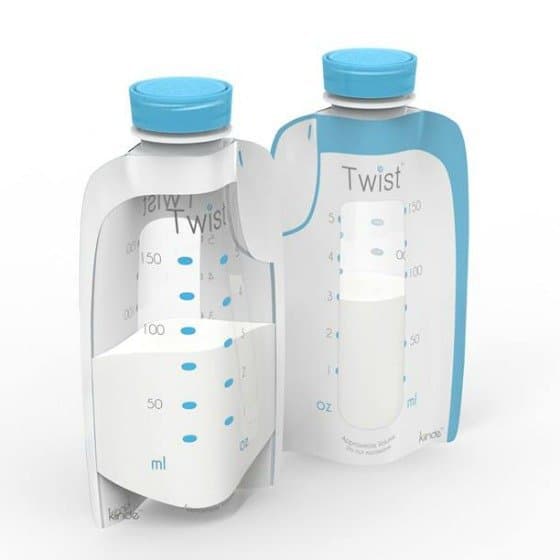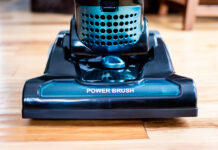If you’re one of the lucky women that produces too much breast milk, you know that this blessing can sometimes be a “curse,” from painful ducts to constant leaking. This post is designed to educate you about oversupply, as well as offer up some ideas of products or home remedies that can help you manage your supply and bring comfort to painful, swollen breasts. Read on!
If you’ve ever complained, tongue-in-cheek, about producing too much breast milk, only to be received with scoffs and phrases like, “I wish I had that problem!” you know that many times, it’s hard to find information or camaraderie regarding breast milk oversupply. Oversupply isn’t just about producing too much breast milk. Oversupply has problems that accompany it such as:
- Very quick let-down. When your let-down is fast and forceful, this can cause your baby to choke, or inhale too much air while trying to eat. Inhaling too much air in a feeding can result in gas pains, excessive spitting up, and colic-like behavior (many times extending beyond the “typical” 3 month mark).
- Painful engorgement: When you overproduce without your baby being physically able to drain your breast, your milk ducts become fuller, leaving your breasts enlarged, and very painful to the touch.
- Plugged Ducts: Occasionally, a milk duct inside your breast tissue will become clogged, leaving a very hard and painful lump on your breast. Plugged ducts are extremely painful, and can escalate into mastitis, if not addressed.
- Milk Blisters, or “Blebs.”: A milk blister, or “bleb” is a blocked nipple pore that becomes trapped under the skin of the nipple. Blebs are also extremely painful, and often times accompany a clogged duct.
- Mastitis: Mastitis is an infection of the breast tissue that results in breast pain, swelling, redness, and flu-like symptoms.

Let’s dive a bit more into each problem, and learn what can be done to alleviate or lessen the pain associated with it.
Quick Let-Down:
There are two ways to deal with having a quick let-down: help the baby deal with the fast flow, or take measures to regulate the amount of milk you produce and adjust it to your baby’s supply needs. To help the baby adjust to your fast milk flow and quick let-down, positioning is everything. Position the baby so he is nursing “uphill” as it relates to mom’s breast. You can do this easily by using a cradle hold, but have mom recline backwards so the milk has to flow upwards, and “fight gravity,” per-se. Or you can use a football hold, but with mom leaning back once again. Another helpful way to nurse (especially for the mom on the go!) is by using a carrier such as a Moby wrap, or kangaroo shirt and have the baby sitting up and facing mom to nurse. You must also remember to stop and burp your baby often, as they are likely swallowing more air and could result in reflux or excessive spitting up. Many mothers have also found comfort in pumping before offering their child the breast, and pumping through the first forceful let-down, and then letting your baby nurse for any let-downs after the initial one. If your baby is gaining weight well, you can take measures to adjust your supply to match your baby by offering them only one breast per feeding session. Avoid extra stimulation such as pumping, and only hand express a little milk until it is comfortable. Avoid hot showers with warm water flowing onto your breasts, and use a cool compress throughout the day to relieve any pain or discomfort.
Product Recommendation

If you are a constant leaker, we absolutely adore these Washable Breast Pads from BoobDesign. Unlike many cloth breast pads on the market, these are extremely absorbent and won’t show through clothing. The waterproof layers will keep you dry (even during the night time!) and the so-soft, natural silk inner layer helps soothe, cool, and heal sensitive nipples due to the material’s anti-inflammatory properties.
Engorgement:
Engorgement most commonly happens when your milk is first coming in, and establishing, typically around days 2-5. Engorgement is a full feeling, and can sometimes be uncomfortable or painful. To prevent or minimize engorgement, it’s important to nurse on demand and often- at least 10 times a day. Many times, mothers will begin to feel engorgement the first few times your child sleeps for longer stretches, or around the time that solid food is being introduced and your child may not nurse as often.
To prevent engorgement, you can try the following things:
- Before feeding, apply a warm compress to your breast to encourage let down.
- Massage your breast downward toward the nipple as your child sucks.
If your baby is not nursing well, or sleeps through a feeding, pumping or expressing breast milk is helpful and recommended. If you choose to pump, slowly decrease the amount of time spent pumping to help your body regulate your supply based on your child’s needs. Pumping feverishly will maintain your supply and won’t allow it to decrease naturally.
Product Recommendation

If you’re looking for a way to easily pump and store expressed breast milk, we adore the Kiinde Twist Pouches. The pouches twist lock onto all major manufactures pumps using an adapter, allowing you to pump directly into the bag and store it conveniently. Once you are done, the Twist Pouches snap securely into the Squeeze Natural Feeding Bottle, allowing you (or Daddy!) to prepare a bottle of breast milk effortlessly (without risk of losing any of that precious “liquid gold!”).
Plugged Ducts:
A blocked duct is an area where the flow of breast milk is obstructed. The nipple may have a pore that is clogged (a bleb) or the clog can be back further in your breast in the ductal system. Clogged ducts can occur at any point of your nursing journey, not just the beginning. You will notice a hard, wedge like area of your breast that may feel tender or painful. It can also look red and swollen. Nursing on the side that is plugged may be painful, especially at let down.
If you have a plugged duct, nursing often is important, as is applying heat (as hot as you can stand) to the affected area. Some women find that nursing on all fours with their breast dangling downward helps dislodge the clog by having gravity assist, or soaking their breast tissue in a bowl of hot water prior to feeding while massaging downward.
Product Recommendation

These Warm/Cool Relief Pads by Boob Design are the perfect addition to your oversupply arsenal. They are made of 100% organic cotton and filled with natural flax seed, and can be placed in the refrigerator to help soothe pain associated with engorgement, or heated in the microwave or oven to stimulate milk flow and dislodge stubborn plugged ducts, or encourage flow prior to nursing with engorgement. They are versatile and so comforting, and fit discreetly in your bra.
SHOP
Warm/Cool Relief Pads by Boob Design
Milk Blisters:
Milk blisters, or blebs, look like tiny white pimples on your nipple. They tend to be extremely painful around the spot and directly behind it, and may accompany a clogged duct, or not. If you squeeze the nipple, the bleb typically bulges out so that you can scratch the top of it. Milk blisters can be persistent and painful for several weeks, until the skin finally peels away naturally from the top of the bleb. If accompanied by a clogged duct, the chance is high that the obstruction is a tiny, hardened clump of fatty milk that got lodged under the skin, and the skin grew overtop of it. Reducing saturated fats in your diet may help prevent clogged ducts and blebs, if it is a common occurrence for you. You can help dislodge the bleb by applying a hot, wet compress directly to your nipple prior to nursing, or rub it vigorously with a hot, wet washcloth. A sterile needle can also be used to gently open the skin and remove the bleb, however, it is best to ask your healthcare provider or lactation consultant to do this to minimize infection risk. Many women have found that applying grapefruit oil daily to the nipple helps keep reoccurring milk blisters at bay.
Product Recommendation

This 100% certified organic and vegan Natural Nipple Butter from Earth Mama Angel Baby is the perfect nipple cream to apply to dry, cracked nipples, as well as mixed with grapefruit seed oil to create a specialized nipple cream ideal to ward off those pesky milk blisters. The main ingredient is olive oil, and it has zero toxins, and is lanolin and cruelty-free.

No matter what your ailment may be, know that all of these obstacles are temporary, and eventually both you and your baby will regulate and find your rhythm, and figure out a way to adapt. The ultimate payoff is that you and your baby will create an irreplaceable bond while nursing, while you are nourishing him the best you can.
Also know that many women struggle with not creating enough breastmilk. Having an oversupply may mean that you have enough milk to donate to a mother in need. Make sure you read this article about Becoming A Breastmilk Donor.
This post is meant for educational purposes only. It is not intended to replace medical advice from your physician, doctor or health care professional. Please read our terms of use for more information.
Photo Credits: The Memoirs of Megan, Cookies for Breakfast, The Art of Making a Baby
Sources:
- https://kellymom.com/bf/got-milk/supply-worries/fast-letdown/
- https://attachmentparenting.org/blog/2012/06/12/fighting-the-battle-against-oversupply/
- https://kellymom.com/bf/concerns/mother/engorgement/
- https://kellymom.com/bf/concerns/mother/nipplebleb/











































